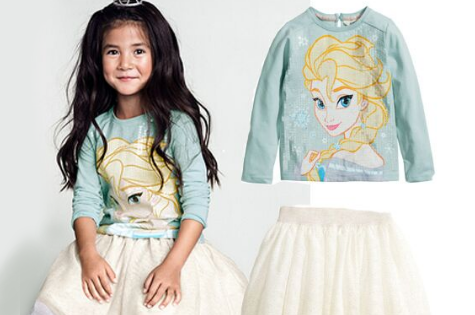As parents, most of us don’t give gendered clothing much thought. From birth we dress our little girls in pink tutus and our boys in T-Shirts plastered with Transformers and Tonka trucks. When the gender debate is ever brought to our attention we think to ourselves “I can just ignore the pink and blue GIRLS and BOYS signs trimming the aisles”, but then we notice it’s now our kids who can’t.
Before they can even read our children have already developed a strong sense of gender based on the same stereotypes we encounter around us daily, from clothing and toys to the world’s favourite fictional heroes. Thanks to a consumer culture that puts all of its faith into gender marketing, unfortunately our kids will spend the rest of their lives being squished into their respective gender boxes. And so, the ‘gender apartheid’ in kids marketing has become well and truly unavoidable.
But while the world tells us that being a girl is analogous with dressing girly and dolls are not for boys, a growing number of Australian parents are beginning to reject gender labels that they feel restrict their kids’ freedom (because after all, gender is not mandated at birth), and allow them to play and experiment – whether that means dressing up as Batman or a ballerina.
While manufacturers previously needed a way to sell new items, and gendered-clothing forced parents to buy new items for each child, the tide is beginning to turn on kids’ fashion. In fact a mounting number of Aussie children’s wear designers are catering to this wave of modification as they quietly take on the fight against‘pinkification’.
Adriana Andelkovic, Founder of popular Aussie kids label Mickey Rose, says “I love designing for a new generation of little people that are set with less boundaries and more creativity.
“Unfortunately until recently, unless you want the traditional (also boring) gender neutral basics, the standard, grey, yellow and white, it’s been very hard. Not to mention these options usually only come in newborn items.
“But it’s time we asked, why can’t brothers and sisters share clothes? Why are we put in a box from such a young age? It’s always been girls in glittery tops, with slogans like “I’m a princess” and boys having to wear tees with diggers and boats. We hope to help move away from these gender specific roles and let kids learn to be who they want to be on their own terms.”

Mother to beautiful one year old Annika, Marisa Quinn-Haisu says, “The shops are full of little girls clothing covered in fairies, happy animals, smiles, suns and rainbows, and that's fine. My little girl likes all of those things. But she also likes traditionally "boyish" things, like dinosaurs. Why not have clothing for girls with dinosaurs and space ships and bugs on them too?
“You can be a little girl who loves pink while also loving dinosaurs and sports, and at the same time you can be a little boy who loves painting his nails and playing with power rangers. We need to stop living in gender "boxes" and let kids be who they want to be.”
But not everyone feels the same. Natasha Dwyer, Founder of kids clothing label Arthur Ave, says, “It’s stupid to worry about being gender neutral.
“I believe children are who they are from the day they are conceived. I design beautiful clothing for girls and boys, and sometimes mums buy something out of the boys section and mix it up fun for their girls. But never vice versa. While kids are young, you can have fun dressing them up before they have input - I think worrying about their health is much more important!”
Adriana from Mickey Rose says, “From a designing point of view we have a great focus on having animal heads and bold pattern repeats in our textile designs, which isn’t gender specific. Children get drawn to the character or imagery first. I love seeing one pattern repeat go from harem pants to a dress or for the same garment to come to life on a little girl then turn a new leaf styled on a little boy.”
So even if you think what you dress your kids in is not a big deal, the fact that people are becoming activists about this indicates that it is subject that is far from trivial.








 Agree (0)
Agree (0) Disagree (
Disagree (









__small.png)










